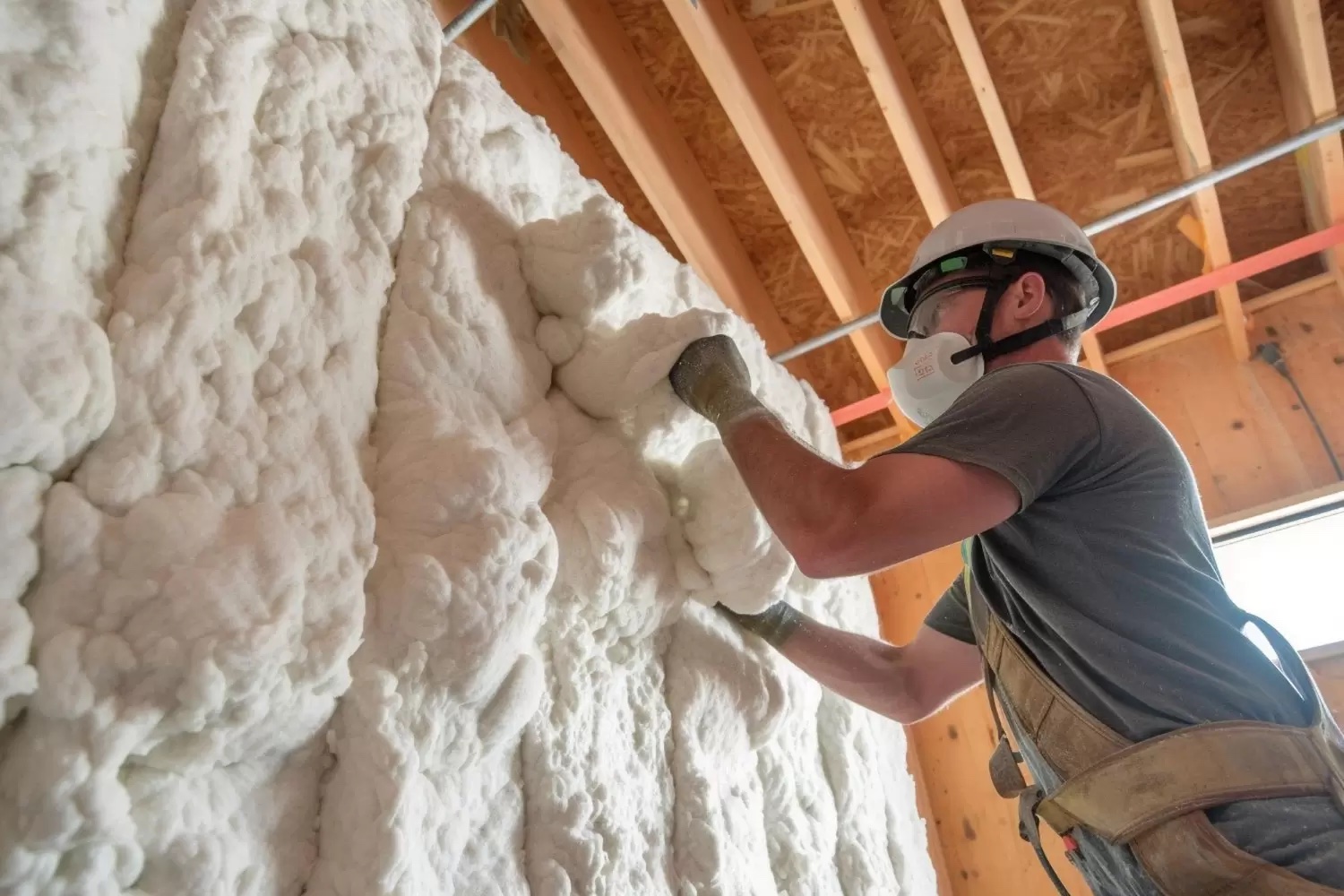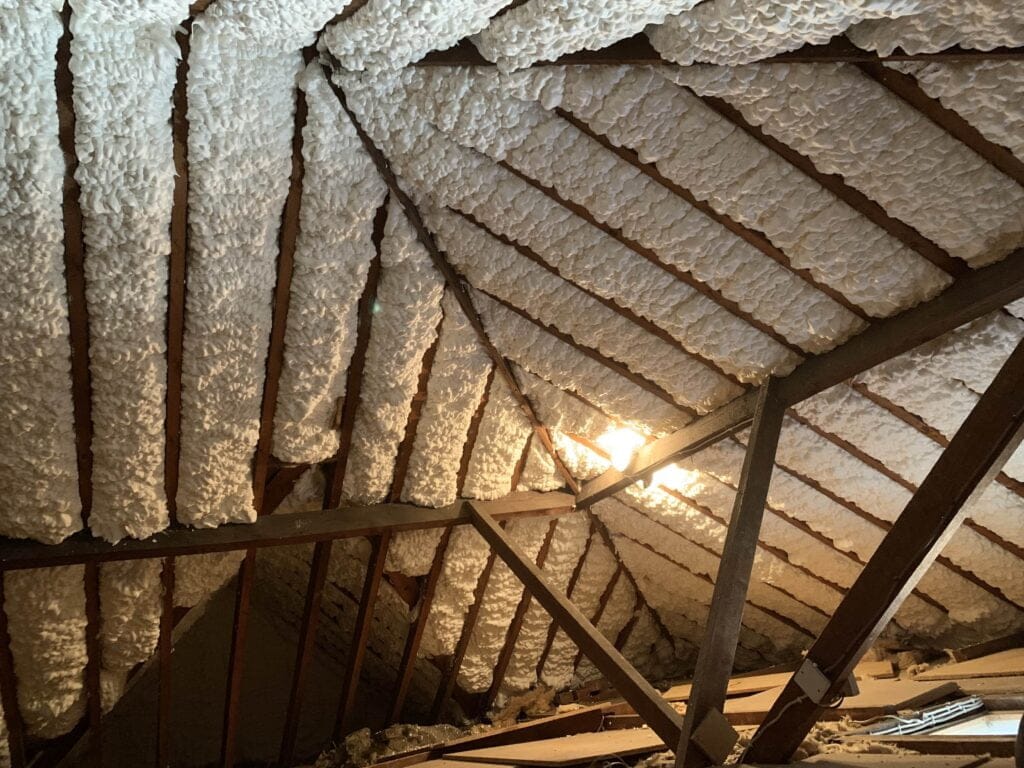Spray Foam: The Ultimate Solution for Air Sealing and Insulation
Spray foam insulation has actually emerged as a leading option for efficient air securing and thermal insulation, using an unique mix of residential properties that set it apart from standard techniques. Its capability to increase and fill up gaps makes it particularly reliable in protecting against air leakage, which can substantially influence power performance. Nevertheless, understanding the complete range of its benefits, installment processes, and contrasts with other insulation types is vital for making notified choices. As we check out these aspects, the implications for both new building and constructions and retrofits end up being increasingly significant. What aspects should affect your option?
What Is Spray Foam?
Spray foam is a versatile insulation product that integrates the principles of air sealing and thermal resistance to improve energy effectiveness in structures. Made up largely of polyurethane or various other similar compounds, spray foam is applied as a liquid that broadens upon call with surface areas, developing a strong, constant layer of insulation. This special residential or commercial property enables it to load voids, cracks, and voids that typical insulation materials might ignore, giving a premium air seal.
There are 2 major kinds of spray foam: open-cell and closed-cell. Open-cell spray foam is lighter and a lot more versatile, providing outstanding noise absorption and a reduced R-value per inch - Spray Foam. On the other hand, closed-cell spray foam is denser, supplying a greater R-value, wetness resistance, and included architectural integrity to developing components
The application procedure normally includes specific tools, guaranteeing a smooth application that sticks to different substratums, including steel, concrete, and timber. This adaptability makes spray foam appropriate for both brand-new buildings and retrofitting existing frameworks. Its ability to create an airtight barrier significantly adds to decreasing power consumption and improving indoor air quality, thereby making it a favored selection amongst home owners and home builders alike.
Benefits of Spray Foam Insulation
One of one of the most considerable benefits of spray foam insulation is its outstanding capacity to produce a continual air obstacle, which efficiently decreases energy loss. Unlike traditional insulation products, spray foam broadens to fill splits and spaces, making sure that air leakage is drastically decreased. This particular not only enhances energy effectiveness but likewise causes reduce utility costs with time.
Furthermore, spray foam insulation gives remarkable thermal resistance, contributing to an extra stable indoor environment. Its high R-value per inch enables effective insulation in restricted spaces, making it ideal for attic rooms, walls, and crawl rooms. The moisture-resistant properties of spray foam assistance avoid mold and mold development, advertising healthier living conditions.
One more essential benefit of spray foam insulation is its sound-dampening high qualities (Spray Foam). It efficiently reduces sound transmission between spaces, producing a quieter and more comfortable home setting. The durability of spray foam likewise stands out, as it does not sag or work out over time, maintaining its performance throughout its lifespan
Exactly How Spray Foam Functions
Recognizing how spray foam insulation works is crucial for valuing its performance in air sealing and thermal resistance. Spray foam insulation includes two primary elements: isocyanate and polyol material. When these parts are mixed, they undergo a chemical reaction that triggers the product to broaden swiftly, producing a thick foam that fills voids, cavities, and splits.
As the foam expands, it complies with surface areas, forming an airtight seal that dramatically reduces air infiltration. This particular makes spray foam insulation very effective at preventing drafts and wetness penetration, which can cause energy loss and damages gradually. Furthermore, the closed-cell variant of spray foam uses superior thermal resistance because of its stiff structure, successfully reducing warm transfer.
The unique buildings of spray foam enable it to adapt uneven surface areas, guaranteeing thorough insurance coverage and a smooth obstacle. Consequently, spray foam insulation not just enhances power efficiency however also adds to improved interior air top quality by decreasing the buildup of allergens and toxins. Eventually, comprehending the mechanics behind spray foam underscores its duty as a superior choice for insulation and air sealing in both property and commercial applications.
Installation Refine Summary

Prior to installation, the room should be properly cleansed and prepped, making sure that surface areas are without particles, dampness, and dirt. Since pollutants can endanger adhesion and overall performance, this step is vital. Once the area see this site is prepared, the application entails blending both parts of the spray foam, which increases upon contact and fills up voids successfully.
Trained experts must conduct the setup, utilizing specific tools to guarantee consistent coverage and ideal thickness. Safety precautions, including wearing protective gear and guaranteeing proper ventilation, are vital during this process. After application, the foam generally cures promptly, forming a strong obstacle that enhances power effectiveness.
Contrasting Spray Foam to Typical Insulation
When reviewing insulation choices, spray foam insulation stands out in comparison to typical materials such as fiberglass and cellulose. Unlike fiberglass and cellulose, which can enable air infiltration, spray foam increases upon application, filling up gaps and holes to produce an impermeable seal.
Additionally, spray foam gives a higher R-value per inch than traditional insulation kinds, offering more reliable thermal resistance in a thinner account. This characteristic is particularly beneficial precede with minimal cavity depth. Moreover, spray foam is resistant to wetness and mold development, which can be a considerable interest in cellulose and fiberglass, specifically in damp settings.
However, spray foam insulation normally lugs a greater in advance cost than its traditional equivalents. House owners must evaluate this initial investment versus lasting energy cost savings and performance benefits. Ultimately, while both insulation types offer their objective, spray foam emerges as an advanced solution for modern-day insulation needs, especially in regards to air sealing and thermal efficiency.

Final Thought
In recap, spray foam insulation stands for a highly reliable service for attaining ideal air securing and view thermal resistance. Its special residential properties, consisting of wetness resistance and sound dampening, make it suitable for numerous applications in both brand-new building and constructions and retrofitting tasks (Spray Foam). Although the initial expenses may be greater compared to conventional insulation materials, the lasting benefits, such as considerable power cost savings and boosted interior air high quality, warrant the investment and highlight its worth in contemporary building methods.
Spray foam insulation has arised as a leading solution for efficient air securing and thermal pop over to these guys insulation, providing a distinct combination of homes that set it apart from standard methods.Spray foam is a functional insulation material that incorporates the principles of air sealing and thermal resistance to boost energy efficiency in structures.When assessing insulation options, spray foam insulation stands out in comparison to traditional products such as fiberglass and cellulose. Inevitably, while both insulation types serve their purpose, spray foam arises as an extra sophisticated option for contemporary insulation needs, particularly in terms of air securing and thermal effectiveness.
In recap, spray foam insulation stands for an extremely reliable solution for achieving optimal air sealing and thermal resistance.